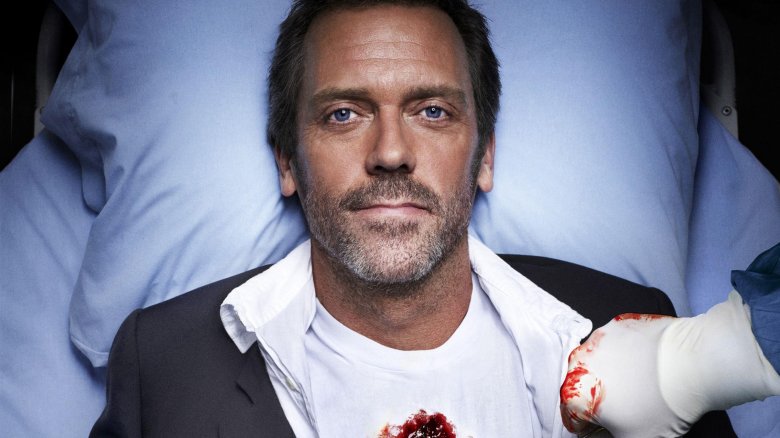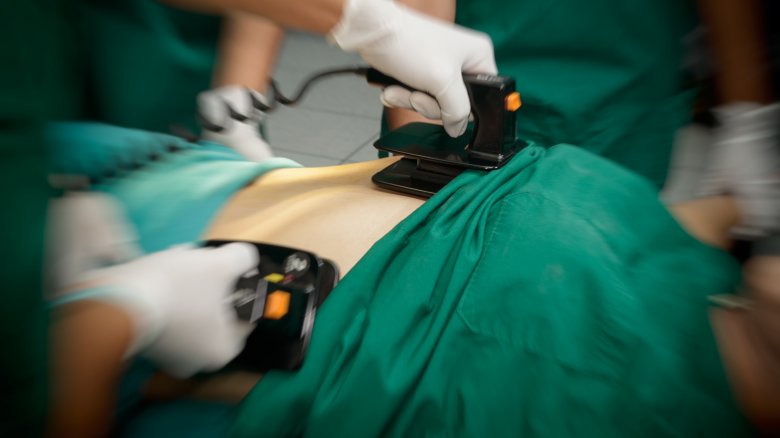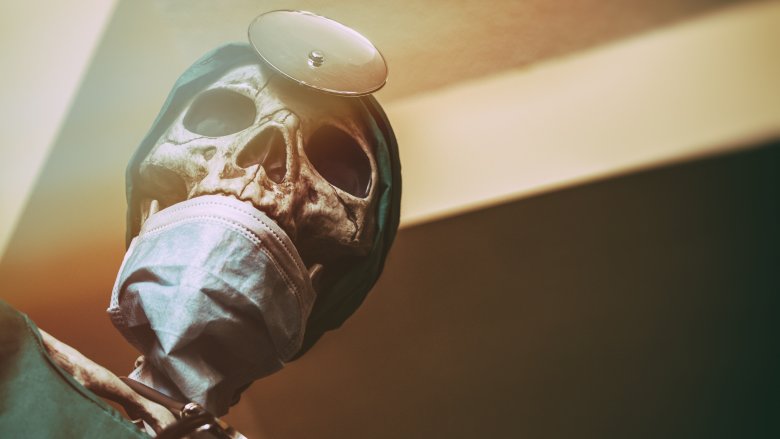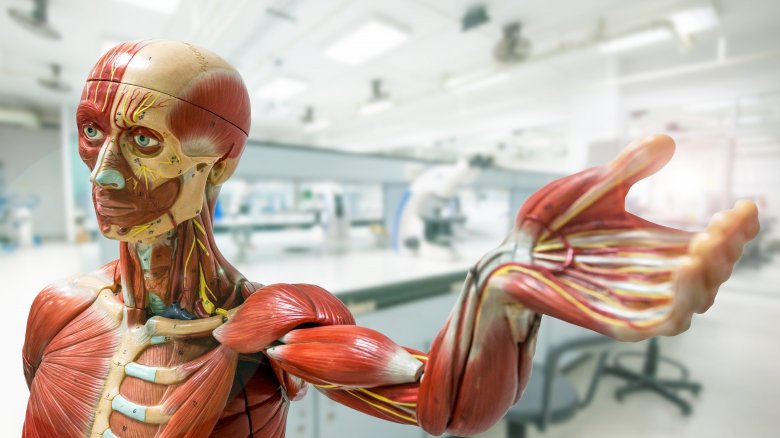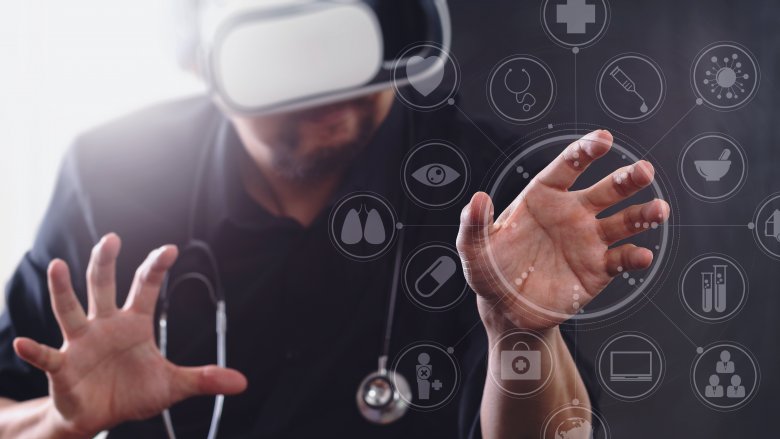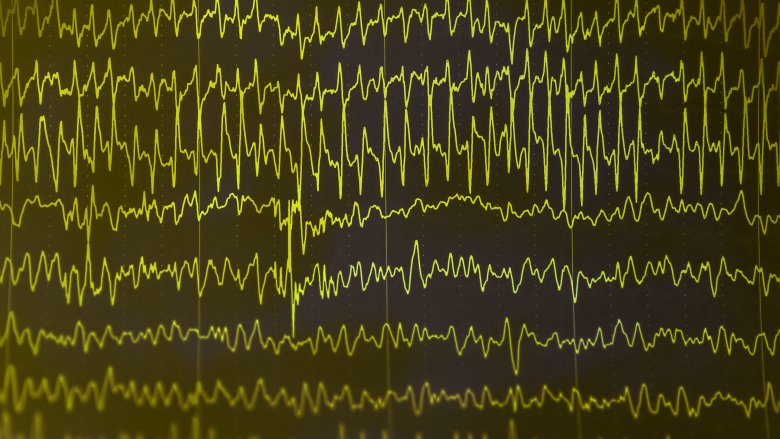Weird Things Medical TV Shows Always Get Wrong
In real life, most people will do everything they can to avoid going to the hospital. Between the pain of the initial ailment, the hours in the waiting room, and the fact that even routine operations cost about double an average person's life savings, being a patient is no playground. But strangely enough, when it comes to leisure time, people love flipping on the boob tube and watching fictional heart operations, gastric bypass surgeries, or potential lupus diagnoses (hint: it's never lupus) on TV.
Real medical workers are some of the hardest working people on the planet, and if you ask 'em, they'll tell you just how inaccurate those TV shows really are. When they're not pulling needles out of arms, nurses and doctors could play drinking games about how many medical errors they can spot in a single episode of Grey's Anatomy, House, M.D., or General Hospital.
Forget everything you think you know about the defibrillator
The classic "flatline" scene has appeared in so many TV shows that it could challenge Mickey Mouse for cultural relevance. You know the one. It's where the patient's heart stops, so the monitor shows a flatline. "Oh no!" the doctor says. "Get the defibrillator!" The doctor presses those scary metal things to the patient's chest, and yells, "Clear!" Electricity zaps the patient, restarts their heart, and the day is saved. Yay!
Uh, no. This whole sequence is a load of crock. Honestly, even Country Crock margarine is realer than this whole shebang.
Here's the deal. The correct term for a flatline is asystole, which means that the heart ain't doing squat. It's not pumping. There's no electrical activity. If asystole occurs, chances are you're a goner — and the defibrillator won't help that, according to Dr. Michael Vagg of Deakin University School of Medicine. See, there are "shockable" and "non-shockable" heart rhythms. If the heart's beating too fast or too chaotically, you can shock it back to a regular rhythm. However, shooting electricity into a stopped heart won't do anything. According to the American Medical Resource Institute, the correct treatment for asystole is CPR and a dose of epinephrine every three to five minutes. Yes, that's right. Minutes. This is a marathon, not a sprint. And even with emergency treatment, less than 2 percent of asystole victims survive.
So yeah, if someone's heart stops, don't grab the miracle paddles.
CPR isn't always so great, either
While we're breaking a few eggs, might as well bust the whole pack. The reality of the defibrillator is disappointing, but cardiopulmonary resuscitation — CPR — isn't all it's cracked up to be, either. To be clear, CPR saves lives. Period. But the way TV presents it is scarily unrealistic.
On TV, CPR seems to save anyone. However, according to research cited by the New York Times, only 40 percent of patients who receive CPR after cardiac arrest survive the immediate resuscitation, and less than 20 percent make it to discharge. The CPR process itself can cause cracked ribs, brain damage, and bruised lungs, if a patient even survives. In an interview with CNN, Dr. David Newman claimed to remember every single patient at his hospital who had ever made a full recovery after CPR. Not because he's got a photographic memory but because he's never seen more than one person a year come out of it alive.
So yeah, most people who request CPR in case of emergency have no idea what they're getting into. But take note of the fact that, according to NPR, doctors tend to say no to CPR. The statistics are pretty mind-blowing. Nine out of ten young doctors who are finishing their residencies would refuse CPR. If doctors don't want CPR, should you?
Everyone makes their own decisions, but proper information is key. One thing is for sure: This cute, cuddly television CPR has gotta go.
The whole super-doctors who do everything myth
TV doctors possess powers beyond the scope of mere mortals. Look at everything they accomplish in a work day! A TV doctor could be diagnosing a patient, fighting for that patient's rights by the afternoon, changing their needles the next morning, giving another patient a straight catheter, and then doing surgery on them that night. In addition, TV doctors are constantly at their patient's bedside, having long, emotional conversations with them about death, life, and their last breakup.
Okay, now try spending the night at a real hospital, and see if you can keep a doctor in the room for even five minutes. Good luck! By the way, doctors don't change your needles, put in your straight cath, or sit teary-eyed by your bedside. In reality, almost all direct patient care is done by nurses.
As Monster.com explains, doctors work with lab results and give instructions, whereas nurses are the ones who actually get to know the patients. According to Jacquelyn Bishop of Providence College, medical shows do a flat-out awful job of portraying nurses, showing them as either invisible background characters or uneducated subordinates, while the super-doctors do everything that nurses actually do. As Bishop explains, proper nurse staffing is actually a matter of life or death: It's been shown that nurse staffing levels directly determine whether patients live or die.
So yeah, nurses aren't lackeys. They're actually the star players. Perhaps the show that most accurately portrays hospitals is Scrubs.
TV doctors would've lost their licenses a long time ago
You ever get stuck with a doctor who is just a real piece of work? Okay, well has your doctor ridiculed the shape of your nose, teased you about your sex life, mocked your religion, and then walked away with his cane while popping Vicodin? Has that happened to you?
Probably not, because as brilliant as he is, Gregory House's medical career would have gone up in a dumpster fire years ago. According to House M.D. vs. Reality, a book by CNN medical correspondent Andrew Holtz, doctors who behave inappropriately receive formal warnings that can escalate to getting fired, peer review, and the loss of their license to practice medicine. But let's cut House a break, because his show isn't supposed to be realistic. The whole concept is based on what an anomaly Gregory House is. He's supposed to defy all medical norms.
Unfortunately, Grey's Anatomy, we can't be so easy on you. As described by Slate, the doctors on this show routinely partake in procedures, hijinks, and disasters that should have gotten them all fired multiple times over. For example, one episode shows characters going directly against a family's wishes to illegally experiment on a patient — but because their autopsy reveals the patient's rare genetic profile, they're let off the hook. In real life ... yeah, no dice. These doctors would have been thrown in the slammer for pulling a stunt like that.
Organ donation isn't dark or scary
Why do medical shows always present organ donation as being creepy and weird? Sure, the term "organ donation" conjures up images of Dr. Frankenstein digging up a graveyard, but in reality, organ donation is fantastic. According to LiveOnNY, a nonprofit organ procurement organization, just a single organ donor can save eight lives, and the transplant success rate is 80 to 90 percent. Pretty awesome, right?
LiveOnNY also rattles off some super-weird bullet points, though. They swear that buying and selling organs is illegal in the U.S. — you'd certainly hope so? — and even reassures readers that doctors won't let you die just to procure an organ because they aren't named Frankenstein. Both these points should be obvious. Why bother pointing them out?
Because TV portrayals of organ donation have scared the hell out of people. In the early 2000s, studies were conducted on TV's organ donation storylines. In a Forbes interview, Professor Susan Morgan — co-author of the studies — called the results an "outrage." On TV, organ donation is usually presented negatively, often with ridiculously implausible scenarios like a patient prematurely being declared dead so her organs could be harvested, or a surgeon running a black market for organs. Yeah, right. "What am I bid for this nice, pink, juicy brain? Hmmm? Sold, to Ygor!"
As Morgan points out, these representations have the real impact of making people wary of organ donation. That's far scarier than any silly, fictional organ market ever could be.
Real doctors don't know everything
Doctors are smart. They have to be, considering they spend approximately 400 years of their life in school. However, doctors aren't perfect. They're human, they make mistakes, and they're as prone to the pitfalls of confirmation bias as anyone else ... unlike TV doctors, whom possess extraterrestrial brains capable of accurately diagnosing and fixing every ailment. Because everyday people see this on TV, they assume that anytime they have questions, doctors will supply correct answers.
Not always. See, doctors don't want to say "I don't know" because that's just embarrassing. So if they really don't know, they might just hang their hat on a term like "medically unexplained symptoms" and call it a day. Basically, that just means they can't explain it. As physician Lisa Sanders says in a Quartz interview, if patients realized how little doctors actually knew, they'd be way more scared — and probably take better care of themselves.
As described by the New York Times, doctors are victims of the same biases as other people. They see what they're expecting to see, but sometimes the actual ailment differs from that expectation. If they expect a treatment to work, they'll assume it did work even when it doesn't. So, sometimes doctors are right, and sometimes they're wrong. But that's okay, because they're humans. As Slate explains, the only show to consistently nail this reality was Scrubs, which portrayed its doctors as flawed, real people who made big mistakes. Rock on, J.D.
TV doctors are abysmal at handling seizures
In the writing room of any medical show, it's easy to picture a whiteboard — like House — with a list of suggestions about how to punch up a boring scene. After lupus gets crossed off (seriously, it's never lupus), there's one really easy way to maximize excitement before a commercial break: give the patient a seizure!
Here's the thing. If your friend ever starts shaking around — and once you've confirmed that they're not just doing some crazy new breakdancing move — do not treat that seizure the way they do on TV. Hell no, don't hold them down. And hell no, don't stick something in their mouth. You could break their teeth, and you'll be paying their dental bills for the next decade. Also, stop worrying about them swallowing their tongue. It doesn't happen that way, no matter what horror stories your great great grandpa told you.
All that "hold them down, put something in their mouth" nonsense you see on TV directly contradicts seizure protocol, according to Time and a researcher who estimated that 46 percent of seizures that happen on medical TV dramas are responded to with wildly inaccurate protocol, with 25 percent being rated as "indeterminate." So maybe those TV "doctors" should read proper seizure protocol, as outlined by the Epilepsy Foundation. Namely, stay cool, don't hold the patient down, do talk calmly to them, and do just try to make them as comfortable as possible until the seizure subsides — unless it lasts over five minutes, at which point medical assistance becomes necessary.
In real hospitals, everyone doesn't work the same shift
It seems like all TV health care workers go to work at the same time in the morning, share the same lunch break (gossip time!), then punch out just in time for the whole crew to kick back some beers. How convenient!
In reality, common nurse shifts vary between eight and 12 hours, according to Rasmussen College. Hospitals are rockin' round the clock, and someone's gotta be on duty 24/7. While 12-hour shifts are popular, some nurses opt for "double shifts" of 16 hours. So sure, they might get beers later, but not until midnight, and with dark circles around their eyes.
Meanwhile, the hours that doctors work are like a feverish nightmare. During their residency, doctors are expected to put in insanely long hours, according to The Atlantic. How long? Try 80 hours a week. If that wasn't enough to cause projectile vomiting, young doctors have to grit their teeth through single shifts that last up to 28 hours. If you're scared of getting treated by a doctor who resembles something from The Walking Dead, you're not alone. A study cited in the journal PLOS Medicine concluded that these crazy-long shifts caused an increased risk of medical errors and other bad mishaps. Umm ... duh? Predictably enough, the reason for this ludicrousness is the long, cold talons of corporate capitalism: As told by The Atlantic, administrators use young, eager residents to plug up their staffing gaps with cheap labor.
Getting romantic with a patient? Uh, no.
Being a patient is one of the most vulnerable positions a person can be in. A patient tends to be sick and scared, while the medical professional controls their medicine, their dosage, and their treatment. The inherent power dynamic between a patient and a hospital worker is far too easily exploited, which is exactly why it's definitely not okay for doctors and patients to wrestle in the sheets together. The American Medical Association gives romances between doctors/patients a big fat NO stamp, calling the practice "unethical."
Not so with TV doctors. First, you've got Meredith Grey smooching a patient in front of her boss. Then there's House's resident heartthrob Dr. Robert Chase, who falls so in love with his patient — a nun, no less — that he sleeps with her. This makes for good TV drama, but it would shatter a medical career in seconds.
In real life, if a medical professional gets it on with their patient, they stand a good chance of getting fired, and they'll definitely ruin their reputation. According to the New York Times, one physician who got in a consensual relationship with his patient earned himself a $10,000 fine, plus ten hours of ethics education. Meanwhile, a survey by Medscape showed that 68 percent of physicians are firmly against romantic relationships of any kind with patients. When it comes to former patients, 22 percent think it would be okay if they had not been a patient for six months.
Doctors won't break into your house (hopefully?)
If shows like House, M.D. are any indication, next time you pass out without warning or suffer an unexplained seizure, you should probably make sure someone cleans your living room because there's a good chance your doctors will break into your house — whether it's locked or not — and go through all of your belongings, personal secrets, and samples. Creepy much?
The fact this question still surfaces on Quora every now and again is a good indication that some people are really worried that Dr. Taub might be going through their stinky sock drawer, so let's clear it up right now: No, doctors don't have any legal privilege that allows them to break into your house. House's technical adviser, Dr. Lisa Sanders, has even clarified just how unrealistic this part of the show is, calling it "thoroughly unprofessional behavior" — besides being creepy, invasive, and so on. Sanders points out that the show portrays the doctors doing this as a metaphor, as the breaking/entering scenes visually symbolize that genuine sense of violation that many patients feel in response to medical questions and probing. Because legal metaphors are difficult.
Listen, if a doctor breaks into your house, it has nothing to do with their medical profession and you should probably call the cops. In the meantime, if you want to bask in the pleasures of fiction, enjoy the above mashup of the House, M.D. crew's many illegal break-ins.
